Psychedelic Plants Links To Our Past And Potential To Shape Future Society
The mind. It's our link to consciousness, our thoughts, and as a byproduct the expression of our soul. That free and unfettered aspect of being human that no one else has jurisdiction over. But as easily as the mind expresses the depths within it remains easily lured into a false reality where thoughts become the object of attention and the source becomes forgotten.
As we delve into this psychedelic journey try to keep an open mind about the questions we will entertain as we progress through this article and remember, it is the mark of an educated mind to be able to entertain an idea without accepting it.
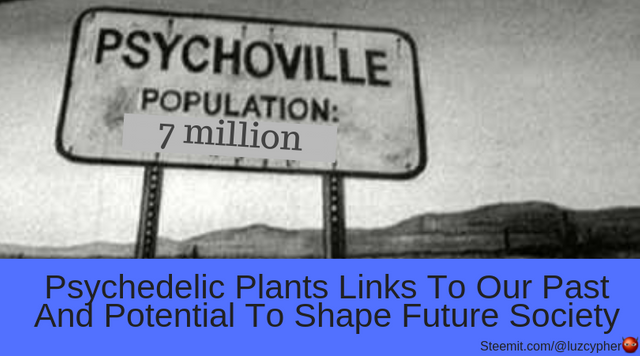
It is here where some scientists and philosophers believe we have lost the true reality and in turn, become products of our environment and culture and it wasn't until scientific study partnered with ancient rituals that they discovered that there might be a way to reconnect the soul and the mind more quickly and intimately.
But are these just escapist tools or could they actually be a cure for the common human issue on this planet?
What are these substances that have such a negative social view and how did they come into the limelight? One specific drug that captured the hearts and minds of scientists and young adults started a particular investigation of the inner workings of the mind.
As world war 2 was ending Swiss chemist Albert Hoffman was investigating a migraine medicine and pulled an old vial off his shelf of LSD 25. His accidental dosage opened his eyes to a new experience that he wanted to share with the world as he believed that this substance elicited a form of a psychic opening that allowed experiences to go all the way back to birth.
The psychedelic experience wasn't something new when LSD hit the scene. Since the late 1800s experiments were already being conducted on psychedelic plants containing mescaline and psilocybin.
Mescaline comes from the peyote and the San Pedro cactus and is used in many Native American rituals. The Huichol mothers of Jalisco, Mexico would introduce peyote through breast milk and by chewing off bits and feeding them to their children. Even the Spanish chronicler Bernardino de Sahagún reports that among the Chichimeca and Toltec peyote was being used at least 2,000 years before the European explorers arrived.
The sacramental use of psychedelics was used throughout history and throughout the world to connect with the divine, but the cacti species are native to the Americas.
Psychedelic Plants In History
Psilocybin is from a class of mushrooms and is used by indigenous people from nearly every continent, in Central and North America, we see mushroom imagery in many indigenous artifacts such as the mushroom stones found in highland Guatemala which were used to grind mushrooms before their use.
Some images refer to the Amanita Muscaria mushroom which isn't a classical psychedelic as it works on different neurotransmitter pathways but still is a psychoactive.
The Olmec, Toltec, and Aztec imagery show the Americas once had a rich history of mushroom appreciation before the European settlers and missionaries resisted their use.
The imagery in Siberia among the Chukotka appears in rock carvings. In Hindu imagery such as Lakshmi holding what appears to be a mushroom some have debated these images as misidentified everyday objects, but believers in the shamanic and psychedelic roots of almost every culture and religion say that you'll even find references in the bible.
The King James version of Exodus 16:14 gives the description of manna that seems very similar to mushrooms in shape, location, and even the time of day that they appear.
Exodus 16:14-16 King James Version
14 And when the dew that lay was gone up, behold, upon the face of the wilderness there lay a small round thing, as small as the hoar frost on the ground.
15 And when the children of Israel saw it, they said one to another, It is manna: for they wist not what it was. And Moses said unto them, This is the bread which the Lord hath given you to eat.
16 This is the thing which the Lord hath commanded, Gather of it every man according to his eating, an omer for every man, according to the number of your persons; take ye every man for them which are in his tents.
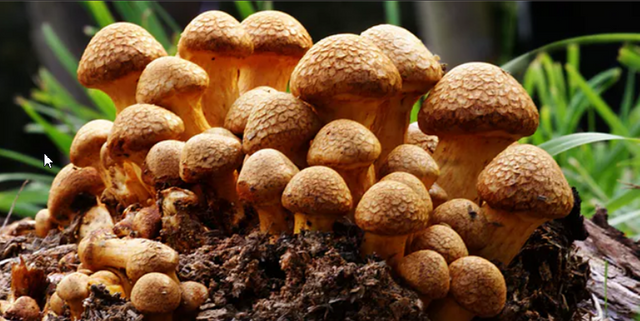
Even a modern look at witch hunts and trials shows a deep appreciation of psychedelic and psychoactive plants that account for their tales of flying on broomsticks and shapeshifting into animals.
There are too many stories to deny that psychedelic mushroom and cactus use were integral to many cultures worldwide. Whatever the conquistadors of the New World were so afraid of seems to still be present as we fast forward to the end of the 1960s.
Psychedelics In Modern Times
The revival of psychedelic appreciation among young adults began affecting the national narrative and anti-drug propaganda was beginning to lose its effectiveness.
How would the world deal with this new problem? People attempting to dissolve the reality constructs of culture. What would this mean for the rest of society?
As Terrance McKenna puts it;
Psychedelics are the antidote of propaganda in some ways. They help you develop a mindset that sees through all that. That's the real reason they're considered dangerous. Psychedelics make you have funny ideas, but funny ideas are dangerous ideas. That's the reason psychedelics are prohibited because they encourage you to think for yourself.
Nation states act as if it's normal to have wars, drop bombs on people, and send in the troops. It's not a normal thing to do at all. It's a completely abnormal and psychopathic thing to do. We shouldn't be killing people for some sort of national goal. It's a terrible mistake that we're making and now the toys of war have become so huge that they actually pose a threat to the whole future of humanity.
The power of psychedelic plants for perceiving higher patterns and seeing through rhetoric led to a desperate reaction by superpowers shutting down the collective memory of traditional indigenous practices and cutting off the public from legal use. Quickly, independent chemists were making slightly altered compounds which were technically not illegal to combat this backdoor approach, the Analog Act was passed and the DEA was granted emergency scheduling power in which they could declare any substance illegal.
Psychedelic plants and synthesized version were put into Schedule 1. This category proclaims the substance is highly addictive and no medicinal value. Was there any evidence for this claim or was it a fear move?
Psychedelics Are Not Addictive
The addictive qualities of psychedelics are nonexistent, in fact, many of the psychedelic plants are used to quit highly addictive drugs like opiates. Alcoholics Anonymous co-founder Bill Wilson reportedly used LSD to quit drinking in the 1950s. Classic psychedelics are not addictive because they don't activate the reward pathways in the brain that involve dopamine.
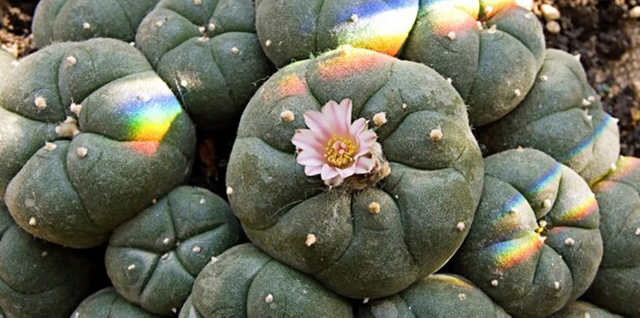
Psychedelic plants mimic the neurotransmitter serotonin and tolerance builds quickly at these receptor sites. Even those plants that don't build tolerance still eliminate themselves quickly and leave behind virtually no toxicity.
They're also being shown to treat addiction rather than add to them. There are so many benefits coming to light from these substances that groups such as MAPS (Multidisciplinary Association For Psychedelic Research), Heffter Research Institute, Beckley Foundation, and #psychedelicsbecause and many others are organizing a science-based campaign to reverse the prohibition because the evidence is clear. They are not addictive and they have remarkable medicinal and therapeutic value.
So the question remains. Why are highly addictive and toxic substances in Schedule II with widespread medicinal use while these age-old plants with a safe and ceremonial history going back many thousands of years and no evidence to prove physiological harm are in Schedule I lockdown?
Is it a war on drugs or a war on the mind?
Why haven't the institutions that make these suggestions turn back to the original use of psychedelics, a return to mother earth for answers?
The position that modern society has taken of psychedelics is we've demonized these substances. We've made them illegal, subjecting people to harsh prison sentences. This is a terrible error that is being made in modern Western society. We are losing contact with our fundamental roots by doing that.
With all psychedelic plants the traditional shamanic use of them nearly always includes a community and ritual setting. The ritual simply means an arrangement of a certain setting for certain intentions.
The shamanic cultures were very clear about this. They viewed the psychedelics as instruments that opened up the mind to telepathy, to clairvoyance, to precognition, and that ultimately helped the brain tune into a different channel, into information that we really don't know how to define at this point.
Shamanism is essentially a living tradition of alchemy that is not seeking the stone but has found the stone - Terrence McKenna
For decades now the prohibition has held firm, no public use, no medicinal use, not even research to back up the claims that place these plants in the strictest category.
The sleeping mind of the people seemingly fell deeper into a consensus trance. It was as if the innate pattern recognition and problem-solving faculties of human consciousness were missing a critical ally, one that had been with us since the dawn of modern intelligence. It seemed that the propaganda campaign had worked.
The Psychedelics Experience
Then in 1990, Rick Strassman, a medical researcher specialized in psychiatry applied for a federal grant to give Dimethyltryptamine (DMT) to volunteers to see what the effects might be.
Public opinion of any mind-altering substance tends to invoke the belief that the experience is simply what happens when the brain fails to function properly as if the default state most of us spend time in is the proper state to operate from.
However, even if this were true when someone's brain becomes dysfunctional and then hours later returns to normal how would that individual explain the experience?
Strassmam said the most striking result of his research and what he really wasn't expecting was the sense of reality that people returned with. They felt the experience was more real than real and the importance of that is that people make their decisions based on what they perceive to be real. We assume the outside world and our inner world is real and so if there's a state that feels more real than real what happens when we make decisions based on the information there?
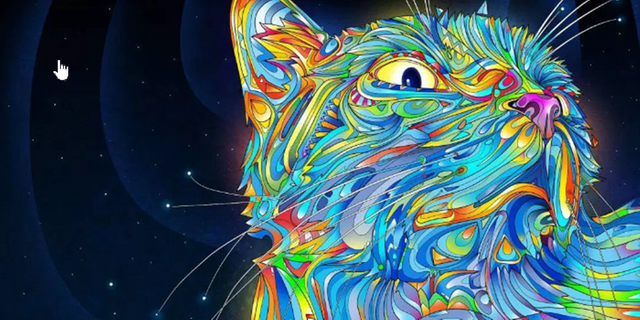
What really is the bedrock of reality? Is the consensus world we typically operate from the more real one? Is this where we'll find the universal truths we seek to make life decisions from? Is it the psychedelic realm that some believe is more real than real?
Perhaps it's neither and they're both merely reference points implying and pointing to the underlying universal truths encouraging us to engage with our own truth-seeking impulse; our innate memory, and integral place within the fabric of reality, that we are all aspects of a singular phenomenon appearing as independent things.
Even Taoists and Buddhists believe that the outer visible manifestations of life are the illusion of temporary garments cloaking universal and unchanging principles that inform, instruct, guide, and breathe life into all that we experience around us.
So, why do we experience the illusion at all? What mechanisms cause us to collectively share such a misleading perception of life and living? Perhaps we should take a deeper look at the physiological effects of the chemical compounds in these plants that the government fears so much.
Classical psychedelics activate a type a brain serotonin receptor called the 5-HT2A receptor and what that means in real terms is the cells become more sensitive. So what you're doing is really ramping up the ability of these cortical cells to process information quickly and more effectively. There's an area in the brain stem called the locus coeruleus (LC). It sends projections up to the cortex that releases norepinephrine.
The locus coeruleus has been referred to as a novelty detector. Normally, if you look at firing in the LC it fires in random bursts. What happens with psychedelics is it increases the frequency of those bursts. We can imagine that if the LC is bursting when it detects some novelty. An analogy would be when people taking psychedelics look at a flower it's as if they are seeing the flower for the first time because of this increased sense of novelty.
What would be the biological purpose of these plants causing humans to see the world as if it's new again?
It is a well-known phenomenon to be looking for something like your keys while they are in your hand or right in front of you but you don't see them. Your eyes have even spotted them but you don't acknowledge that you've seen them yet. Our perception works in pattern recognition and this allows the world to become predictable so we can find a rhythm to operate within.
These plants and their effect on the detection of new information from old patterns may be the direct cause of neurogenesis and neuroplasticity. It has been shown that these serotoninergic plants initiate the growth of new brain cells as well as new neural connections and patterns to emerge.
Let's think of this less more of causation and more of a correlation. Neurogenesis and neuroplasticity could be occurring when authentic childlike learning is happening. The neural growth seems to happen most in the hippocampus which regulates emotions and is involved in memory.
A psymposia.com article says new studies are showing that neurogenesis in the hippocampus activated by psychedelics might be a part of the acquisition of new behaviors and new pattern recognition.
With the proper set, setting, and skill these changes in the brain may likely be why psychedelics have been so effective in treating PTSD, anxiety, and depression, where other treatments have failed.
Imagine for a moment that you were just born again or that all your memory has been put on hold and you're seeing the world free and clear of cultural conditioning. Imagine all the explanations for what this world is and why it is the way it appears have been erased. Imagine you take a look at the people in your neighborhood, the animals in homes and in nature, the health of the oceans, forests, and communities.
What questions would you begin formulating and what role do you play in all of this? These are the questions one starts asking when introduced to the world of psychedelia. The mind begins asking broader, deeper, and more timeless questions. And perhaps this is what makes them so difficult to properly name. They allow new patterns to be recognized and new behaviors to be adopted.
Where most of what the Western world calls medicine tends to disengage or mask the symptoms of diseases while leaving the root cause untouched, these ancestral tribes understood the many healing qualities of these plants.
The most profound effects seem to be the self-reflection people go through under their influence, the ability of these plants to confront you with your regrets and worries. Psychedelics help deconstruct old behavior patterns and build newer and healthier ones as seen from the creation of new neural pathways and the birth of new nerve cells, a quality long thought to be impossible.
Psychedelics Access To New Information
Psychedelics can give you insights into how to be a better person. Some of the most skeptical and evidence dependent researchers speak very lucidly about a very tangible spectrum of benefits they've personally experienced from using these substances responsibly.
One of the fundamental effects of psychedelics is to integrate material that is normally not accessible to consciousness and the fundamental way in which psychedelics make this information available is by a destabilizing of what's called the default mode network; this part of the brain that integrates our sense of self, our autobiographical memories and our reflection upon our lives. So, basically what's happening on psychedelics is a liberation of the parts of the brain of that 80 or 90% of the brain that we say we don't use. We use it but we're just not able to access it. Psychedelics gives one access to that unconscious.
The language facility in the brain is destabilized as well so the combination of our self-identity and our language being put off balance by simply ingesting a plant gives rise to the ineffability of the experience. Just as we see with any mystical or spiritual experience words are not enough to communicate the magnitude of the experience.
If researchers are correct in positing that consciousness is not generated by the brain, but tuned into, what then are these psychedelic plants trying to show us?
Across the range of psychedelics, you can definitely say that there's a broad range of imagery that is common. Not everybody will have all those images all the time, but it starts off with entoptic phenomena which are visual effects whose source seems to originate within the eye itself. People often report they start seeing zigzag lines and fantastical geometric patterns and elaborate mandalas appear in the geometry. Then there tends to be the sense of passing through a vortex of some kind into a seemingly convincing parallel universe.
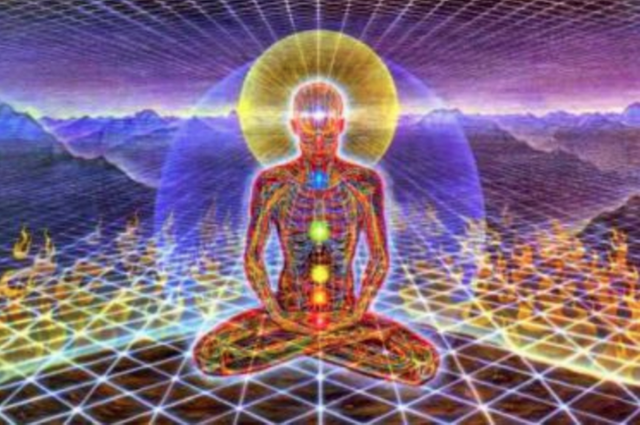
Is this the same phenomena that humans have been experiencing since the time our ancestors were painting their vision in caves some 40,000 years ago? Were those entoptic images and portals depicting a dimension we are still tapping into today? What is this vision and could it be some kind of collective consciousness of the human soul experience?
The ethnobotanist, author, and psychedelic psychonaut Terrence McKenna relates the plant's intelligence to that of mother earth. The ancient Greeks called it Gaia.
The whole thing is an enzyme-driven process. We are like an organ of Gaia. We are the organ which binds and releases energy. A liver cell doesn't need to understand why it binds and releases enzymes of the liver. We bind and release energy for reasons perhaps never to be understood by us but which place us firmly within the context of the Gaian mind. Suddenly, we come with an epigenetic capability. We write books, tell stories, dance, sing, carve, paint, These are not genetic processes; these are epigenetic processes and they bind information and express the Gaian mind. - Terrence McKenna
Are Psychedelics The Gaian Mind Communicating With Us?
The Gaian mind. To many, this idea doesn't fit into the context we've been given by Western culture. How could the rocks be considered alive? How could the bones in our body be considered the same? What does alive really mean?
The Gaian mind is a real mind and its messages are real messages and our task through discipline, psychedelics, attention to detail, and living, is to try and extract this message and eliminate ourselves from the message so that we then can see the face of the other. The other, in this case, would be the identity of that which is sending the message.
Because we scarcely understand who and what we are, why we're even alive, and what we're meant to do with our time here, asking what the Gaian mind truly is might be premature.
Could it be possible, just like a human organism, that plants communicate not only among themselves and to humans but among all other species? Is this the collective consciousness of the planet and is it possible the war on the mind is not limited to human minds but to the mind of the entire planet?
Terrence and Dennis McKenna are possibly the most noted scientists and theorists on why these plants are here and what their greater purpose might be. Both have firm beliefs backed by a lifetime of investigation that these plants are here to serve the planet by those willing to listen to their place in it.
I like to call them ambassadors from Gaia. They happen to make these messenger molecules that are useful for communicating with the complex brains of these problematic apes that evolution has spawned. That would be us, We're the most dangerous thing to show up on the planet in the last hundred million years because we have the potential to completely upset the apple cart by the technologies that we can manipulate. We're living in a time where we may actually cause our own extinction because we don't have a compassionate relationship with our environment as a global society.
Can Psychedelics Save The Earth?
If the ecological threat we face is truly upon us could the psychedelic plants be intervening on behalf of Gaia? Could the earth be sensing it's in danger and trying to get a message to us that we have to wake up?
Are psychedelic plants here to introduce us to ourselves, to the shadow of our psyche and the ills that come from the sleeping mind? What if the greatest threat we face is not out there in the world of symptoms, but in here in the dark corners of individual psychology and its rippling effect into the masses?
Since the dawn of time psychedelic plants have been there. They've seen the horrors of the past and have always produced the medicine most needed by these dangerous minds. A class of compounds that when all is said and done offer us an honest look at ourselves and from this new perspective humility, compassion, and community bonding naturally emerge. Perhaps they confront us and give us the only medicine that may help us out of these dark times; love.
How far back can we trace the human psychedelic relationship? There's really an enormous wealth of evidence to suggest, I would go beyond saying suggest, to prove that our ancestors deep into prehistory were using the kinds of substances we call psychedelics today. These would be the natural psychedelics that are available from plants. These plants have played a fundamental role in the human story.
Psychedelics Societies Of The Past
What evidence can be found that at one time psychedelics were an accepted practice in the understanding of the universe?
In 1976 a Soviet archaeologist Viktor Sarianidi uncovered a 4,000-year-old temple complex in present-day Turkmenistan. This complex has many rooms with stone vats coated with residue of cannabis, as well as poppy used to make opium, and ephedra used to make amphetamines. This must mean it was a facility to mass produce a hallucinogenic cocktail.
Historians have suggested that this region was home to goat farmers that commingled with a nomadic horseback tribe and for the most part stayed quiet of conflict.
Could this discovery hold the key to the ancient fabled beverage of the gods? Has the evidence and long lost ingredients of what the oldest Indian text the Rigveda called soma finally come to light? Is this evidence of an ancient psychedelic society and if so, where did they disappear to? Why has the memory of this culture been erased and could this be an ancient representation of humans going beyond the veil to see the collective consciousness?
Related Posts
Psychedelic Plants: Their Role In The Birth Of Human Culture & The Lessons They Can Teach Us Today!
Two Weeks At Joshua Tree - Mushroom Stargazing, Giggling Coyotes And Meeting Joni Mitchell
Hitchhiking Naked Down The Lost Coast Of California's Highway One
Sowing Seeds Of The Devils Weed - Confessions Of A Second Generation Pot Farmer
Luzcypher's Announcement For Steem Witness




I almost made it to the bottom. I love your post and agree that it helps that people open their minds. There is literally war on the mind. There never was a war on drugs. We won't go political here. So easy to do.
I read my husband a bit of this and he said California is thinking of legalizing Psilocybin.
I grew up in Texas where Psilocybin / magic mushrooms grow naturally.
I remember climbing a fence with my husband, we were in our 20's and once on the other side, we are standing there. I look and a bull is stamping his foot staring at me.
I turn to my husband and he is gone, he ran and is behind a tree.
I did escape but in all these years have never let my husband forget that. LOL
I used to collect them wild in California in the cow pastures and in the flower beds of these really rich people who had them growing on their property and didn't even know.
Amazing post! Psychedelics, in my opinion, can be the cure and answer to many things! I feel that in the past, many ancient civilisations used them to their advantage and have even evolved their consciousness - this could be the missing link in human evolution?
Also, sure, they are 'fun' to take and enjoy the feeling, but there is a deeper meaning. Well, I say they are fun, I mean mushrooms and acid can be very fun - however, when we utilise these to our benefits we can find something out and have a very clear outlook - a powerful experience for sure! I feel that MANY people need to experience a strong mushroom trip in the right setting whilst they contemplate certain issues. I for one have benefited from this in the past and hope to revisit some time soon. DMT on the other hand really was profound... I am not sure if I need to try this again, but I think I will do in the future.
Awesome thought provoking post!
Thanks. I have done countless trips for fun and therapy and feel like I'm due for another soon. It is very important that people do them in the right setting and mindset to get the best results. I've had a couple of bad trips before and it was all because of my mindset at the time. Nut two bad tips out of hundreds is not such a bad average.
DMT, on the other hand, is extremely intense and not for the fainthearted.
Yep I feel the same, it has been a few years and I feel I am due again soon. I know it will feel like "welcome back" feeling when I get back into that deep zone from mushrooms. I need to lay out and look at the stars again - that feeling was like no other and reset me :)
I have also had a bad trip, whenever I do acid I find that out of the 10-12 hours, there is always about 1-2 hours where it's a little odd. I looked in the mirror once and saw myself as an old man and began to panic, but then I realised it was saying to always be nice as I would be old and regret certain ways I might act.
DMT sure is not for the faint hearted... it is extreme power!
I don't like to look at mirrors when I'm tripping. It's introspective enough already.
I did shrooms at Joshua tree before. Fun time.
https://steemit.com/story/@luzcypher/two-weeks-at-joshua-tree-mushrooms-stargazing-giggling-coyotes-and-meeting-joni-mitchell
I've been feeling a really strong pull towards "more consciousness" ;) over the past year and have begun looking into this more and more. All the Joe Rogan conversations on youtube are very helpful to learn from other people's experience or expertise in this field ;)
Going to Pai tomorrow!... Let's see :)
Pai is fun. I'm sure you can find some "more consciousness" there. Plus, happy birthday! Have fun.
Yes, that’s what I’m hoping for 😉Thank you! 😊
Posted using Partiko iOS
Another excellent post sir.
The most startling observation I've made over they years - and with enough different experiences to make it, as I see it - a valid observation.
The more authoritarian a person is in outlook - the more fear they express in the taking of psychedelics.
The same people (if they decide to take them) have two very different outcomes.
One has a bad experience, and it doesn't alter their perceptions of the world, once back in the 'real world'.(fear of losing control?)
The others? - It changes them totally - and over time lose their authoritarian perspectives.
I've seen this happen enough times, with enough people, to notice the pattern.
I would have to agree with your observations. It's that fear of losing control that hinders the experience for people. People who have identified with their ego and mistake it for their true selves seem to have the hardest time with psychedelics which tend to dissolve one's sense of ego. They mistake it for losing their minds and get really frightened.
I have done lots of psychedelics and tried my hardest to purposely use them to destroy my ego and, like weeds, it keeps growing back. But I also have access to another part of myself that lives outside the ego so it was never frightening to me to witness the ego perish and I could just retreat to that other place and watch it like watching a movie, knowing it would return once I came down.
When you let go of the feeling of having to be in control and let the mind wander in this new pool of information it feels like an oasis to take refuge in and is quite enjoyable. I'm giggling now thinking about it.
My experiences have been 90% partying! -(not to say not spiritual experiences - far from it.) But very little 'searching for anything'...
I'm giggling to! lmao.
Searching for my keys perhaps.
@luzcypher Things are so strange in the world my husband and I are so glad we know all this is an illusion. What era did you grow up in? You may be younger, not sure. I have great memories.
I'm 55. Raised as a free-range kid before the internet.
All right! I am 63. Raised in a crazy time and long before the internet.
Here's a story you might like of days before the internet.
https://steemit.com/story/@luzcypher/hitchhiking-naked-down-the-lost-coast-of-california-s-highway-one
since I resteemed your post earlier I will have this. So will read it later today. I clicked over and saw it was about hitchhiking too. It used to be fairly safe to hitchhike.
My husband hitchhiked all over the country. He has lots of stories. Thanks for the link.
@luzcypher I just finished your post you referred me too. Glad you survived...there are so many stories .. good thing your friend happens to be driving by.
Hi @luzcypher!
Your post was upvoted by @steem-ua, new Steem dApp, using UserAuthority for algorithmic post curation!
Your UA account score is currently 6.676 which ranks you at #134 across all Steem accounts.
Your rank has dropped 1 places in the last three days (old rank 133).
In our last Algorithmic Curation Round, consisting of 153 contributions, your post is ranked at #12.
Evaluation of your UA score:
Feel free to join our @steem-ua Discord server